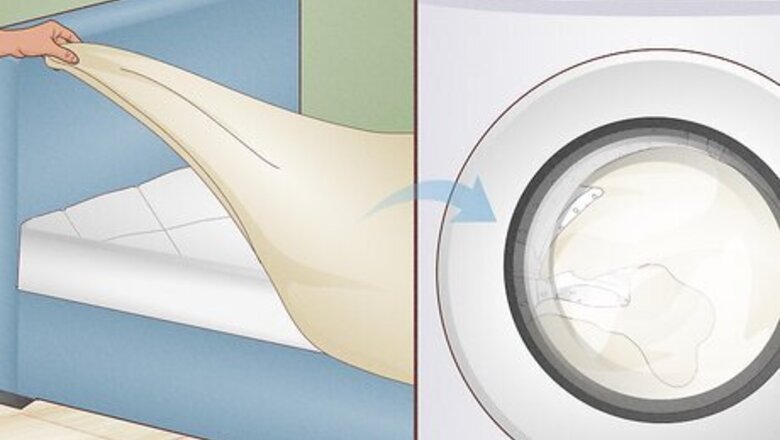
views
Doing a Basic Mattress Cleaning
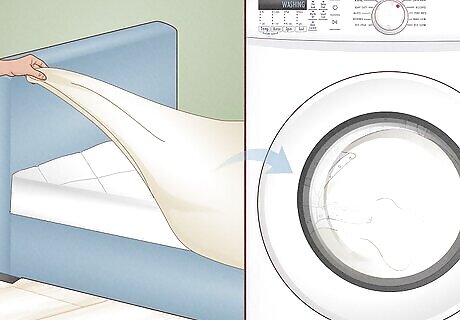
Strip the bed and wash your bedding. First, remove pillows and decorations from the bed. Take the pillowcases off and throw them in the laundry basket. Remove the top sheets, fitted sheets, and mattress protector. Wash the bedding, including sheets, linens, and pillowcases, in the washing machine while the mattress is being cleaned. If you use a duvet, remove the cover and wash it with the linens. Read and follow care labels when washing any fabrics. Use the hottest water and dryer settings possible to kill any bacteria or dust mites that may be hiding in your linens.
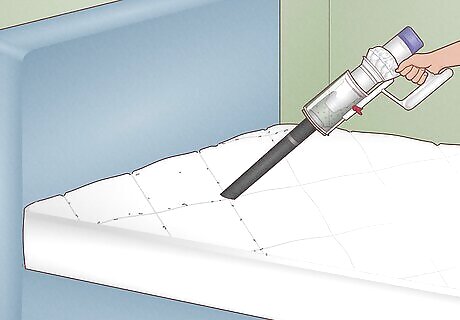
Use your vacuum’s upholstery and crevice tools to remove debris. The first step to cleaning your mattress is vacuuming. This removes mites, dust, dead skin, hair, and other debris from the mattress. Use a wide brush attachment to vacuum the mattress top. Then, use the long upholstery nozzle or crevice tool to get into cracks, vacuum edges and piping, and clean the sides and corners. Before vacuuming, make sure the nozzle and brush attachments are completely clean.
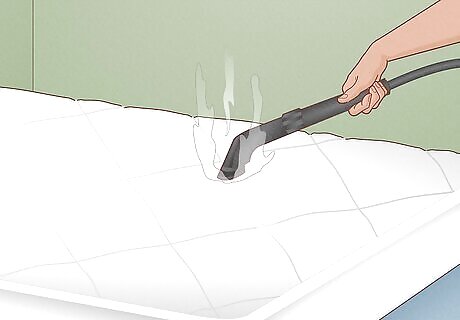
Skim a steam cleaner over the mattress to help kill dust mites. To steam clean your mattress, hold the steamer head above the mattress’s surface without touching it. Use long, slow strokes to go over the entire surface with the steam cleaner. Keep your hand moving and don’t concentrate on one spot or the mattress may get too wet. Check your mattress label to see if it’s safe to steam clean it. Look for a symbol that looks like an iron with lines coming down from the bottom. If the symbol has an X over the lines, don’t steam it. Steam cleaning your mattress may not be necessary but is recommended if you suspect you might have dust mites. Allow the mattress to dry completely before moving on to the next step.
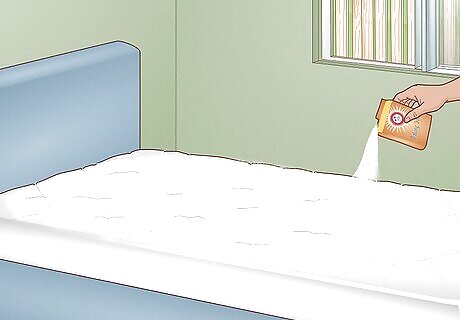
Sprinkle baking soda over the mattress to absorb odors. Baking soda naturally neutralizes odors and helps absorb moisture. Sprinkle a generous dusting of baking soda over the entire surface of the mattress. To give your mattress a fresh smell, stir five drops of your favorite essential oil into the baking soda before sprinkling it onto the mattress. To apply the baking soda more evenly, pour it into a sifter first, and then distribute it over the mattress. Let the baking soda sit on the mattress for at least 30 minutes. This gives it time to break down acids, neutralize smells, and absorb any liquid left over from your spot cleaning. Leave the baking soda on for several hours if you have the time. The longer it’s on the mattress, the more it absorbs and cleans.

Vacuum the mattress again to remove the baking soda. When the baking soda has had time to sit, vacuum the mattress to remove it. You'll take acids, odors, and liquid that the baking soda has absorbed along with it. Use the brush attachment to vacuum the top of the mattress and the long nozzle and crevice tool to get into corners, cracks, seams, and piping.
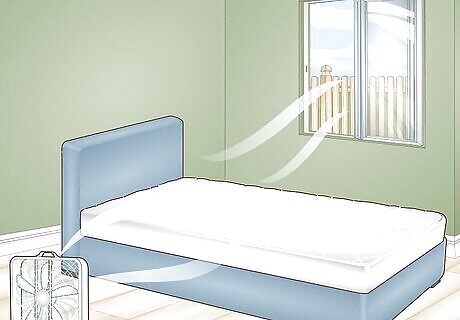
Open a window or use a fan to air out the mattress. Once the mattress is clean, it’s a good idea to let it air out so it is completely dry before re-making the bed. Moisture that’s trapped inside the mattress can lead to mold, which is very difficult to remove. During the warmer seasons, open a window in the room to let in fresh air and dry out the mattress faster. Open drapes and curtains to let in the sunshine, as the UV rays in the sun help kill bacteria and mold on the mattress, eliminating even more odors and drying it out faster.
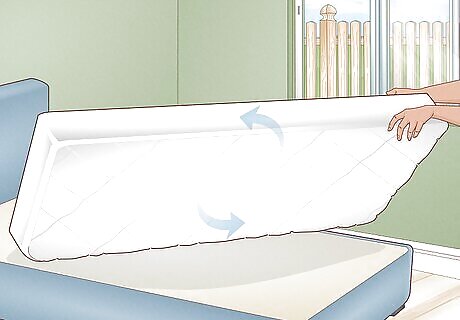
Flip or rotate your mattress to ensure even wear. For conventional inner-spring mattresses that don’t have a designated top and bottom, flip the mattress over so you're sleeping on the other side. Rotate mattresses with a designated top and bottom – like memory foam and hybrid mattresses – 180 degrees so the head ends up at the foot of the bed. This ensures even wear over the surface of the mattress. If you flip the mattress, make sure to vacuum and deodorize the second side before re-making the bed. Flip or rotate your mattress every three to six months to ensure even wear. When the mattress is clean, dry, flipped, and protected, make the bed with your clean linens. Start with the fitted sheet, followed by the top sheet. Put the pillows back in their cases, and return all pillows, blankets, and decorations to the bed. Feel the mattress before making the bed to check for moisture. If you encase a damp mattress in linens and blankets, it won’t dry out, and you'll have mold growth.
Spot Cleaning Stains & Spills
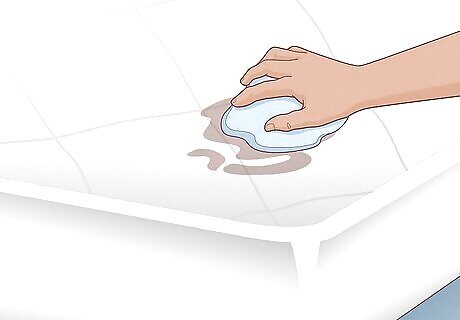
Blot any wet stains on your mattress first. Clean recent spills that are still wet immediately. Get a clean cloth damp with cold water. Blot the spill with the damp cloth. Do not rub or scrub the spill, as this can push it farther into the mattress. Keep blotting until you’ve absorbed all the excess liquid.
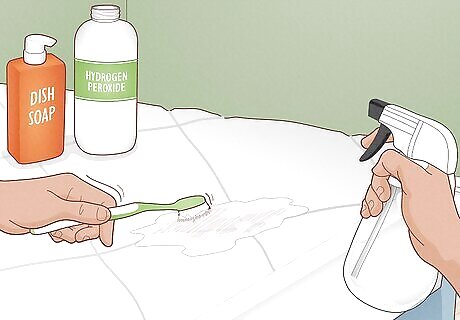
Spot clean dried stains with hydrogen peroxide and dish soap. Combine 3 parts hydrogen peroxide to 1 part liquid dish soap in a spray bottle. Close the bottle and shake it to combine them together and create suds. Spray the solution onto the stain. Use an old toothbrush to gently scrub the solution into the stains. Then, allow it to sit for 20-30 minutes. Blot the excess cleaner with a clean, damp cloth. This solution is effective to treat stains from dirt, food, and drinks. Alternatively, expert house cleaning professional Chris Willatt says, “You can hit [the stain] with some Oxi Clean and it dyes [the mattress] and turns it back to white.” For a memory foam mattress, use only the smallest amount of cleaner possible, because memory foam should never get saturated.
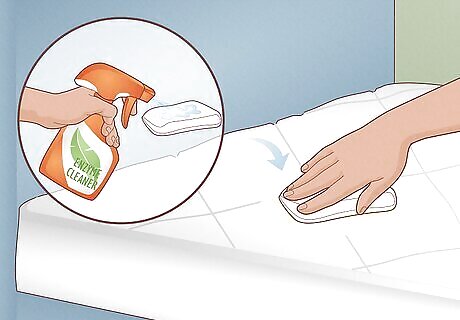
Clean biological stains with an enzyme cleaner. Spray some enzyme cleaner onto a clean cloth. Blot the stain with the cloth to saturate it. Let the enzyme cleaner sit for about 15 minutes. Blot the area again with the same cloth to remove the stain. Then, blot the area with a clean cloth that’s damp with cold water. Mattresses, especially memory foam, aren't designed to get wet, so use as little cleaner as necessary to treat the stains. An enzyme cleaner breaks down the proteins in blood, urine, sweat, vomit, oil, grease, and other biological stains. It can also help get rid of any lingering odors, Willatt advises.
Cleaning the Mattress Protector
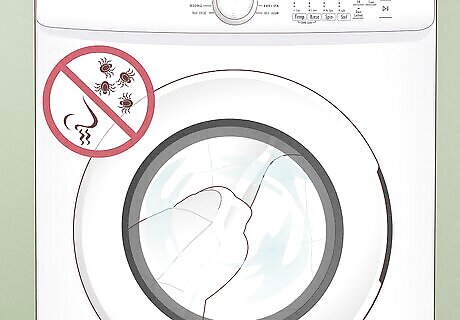
Machine wash the mattress protector to remove odors and mites. Check the washing instructions on the mattress protector’s label to see if it’s machine washable. If the protector is machine washable, toss it in the machine and add at least 2 tablespoons (30 mL) of laundry detergent. Wash the mattress protector by setting the machine to a hot cycle to disinfect it. Tumble dry the protector in the dryer on low heat or hang it to dry. Look for a symbol that looks like a cup filled with water. If it has an X through it, your mattress protector is not machine washable. Avoid washing mattress protectors unless the label specifically states it’s machine washable. If it’s not washable, sprinkle baking soda on it, then let it sit for 30 minutes and vacuum it before removing it from the mattress.
Protecting Your Mattress
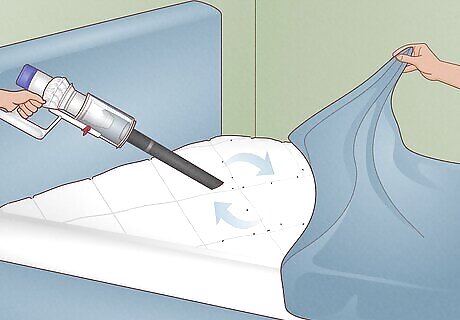
Wash your bedding and clean your mattress regularly to protect it. These are some of the best ways to make your mattress last longer. Additionally, use a water-proof mattress protector or good-quality mattress pad to help prevent dust and other allergens from building up on the mattress’s surface. Rotating or flipping your mattress at least a few times a year also helps it last longer.
How often should you clean your mattress?
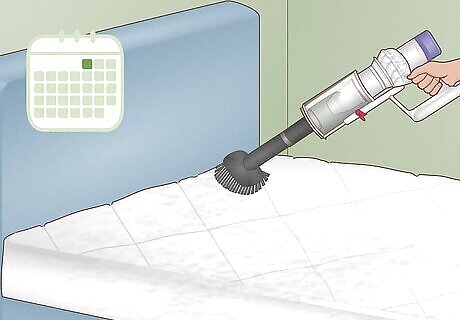
It’s a good idea to vacuum your mattress monthly. Then, do a deeper cleaning every 6 months. Wash your bedding once a week for a fresher, more germ-free night’s sleep. Plus, regular cleanings help your mattress last longer. Clean any spills as soon as they happen to prevent stains.
When should you clean your mattress?
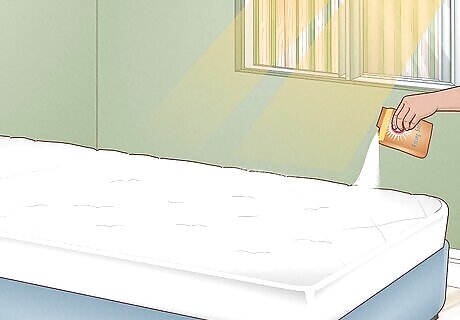
It’s usually best to clean your mattress first thing in the morning. This allows it to fully dry after cleaning so it’s ready to sleep in that night. It also allows plenty of time for the baking soda to eliminate odors. Another option is to clean your mattress right before going out of town and let it air out while you’re gone.
When to Flip or Rotate a Mattress
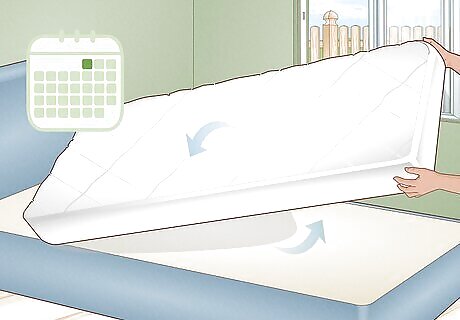
Flip or rotate your mattress based on its type and construction. Double-sided mattresses (inner-spring mattresses) are designed to be flipped roughly once a month. Single-sided mattresses (memory foam) are rotated about once a month. Flip mattresses filled with natural fibers, like wool and cotton, every few months.

















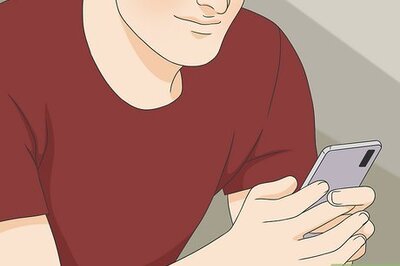


Comments
0 comment